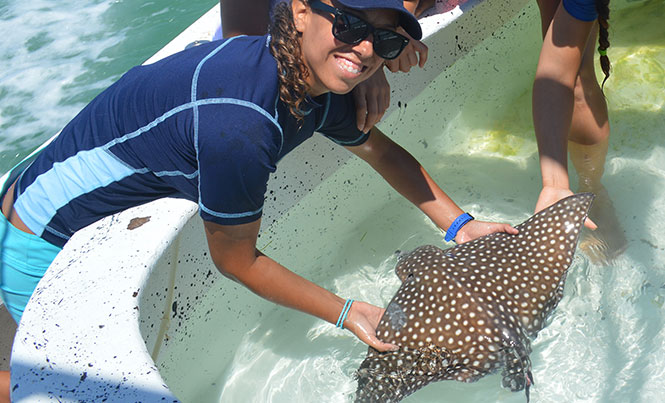
Understanding the value of nursery grounds for the survival of these commercially-important species and the impact of fishing juvenile or pregnant females is crucial to manage and protect such a valuable resource
Sharks and rays have babies in different ways: some lay eggs and many give birth to live pups! However, there is little parental care. Instead, there is a considerable investment from the mother into the embryo’s development so the newborns are fully equipped for life; also, many species give birth in areas scientists call ‘nurseries’.
Nurseries are areas usually quite shallow with turbid waters; these conditions are thought to help the young one to avoid large predators. They are often near mangroves or in estuaries which are nutrient-rich environment helping the growth of the newborns. Depending on the species, nurseries are commonly used for a few months or even years by the same animals until the shark or ray is large enough to venture into the deeper ocean.
Mexico is one of the many countries where sharks and rays’ fisheries are valuable sources of food and commerce. Many of the species caught use inshore shallow waters or coastal lagoons as nursery areas. Scientists have been able to identify nurseries in many areas where fishing is allowed in both coasts of Mexico. For example, the lagoon of Yalahau (Q. Roo), lagoon of Términos (Campeche), lagoon of Madre (Tamaulipas), or the Gulf of California in the Pacific coast.
It is important to understand that it is very hard for sharks and rays find to keep up with fishing pressure because they have a very low reproductive potential, long gestation periods and very slow growth. Additionally, shark specialists have suggested that fishing juvenile sharks, fishing in nursery areas, and the lack of implementation are some of the biggest issues of the Mexican shark and ray fishery.
Thus, understanding the value of nursery grounds for the survival of these commercially-important species and the impact of fishing juvenile or pregnant females is crucial to manage and protect such a valuable resource. It is urgent that shark fishing regulations in Mexico include not only the protection and appropriate management of key habitats such as nurseries, but also the strict implementation of regulations so that overfishing and/or habitat degradation do not finish with Mexico’s valuable sharks and rays’ fisheries.